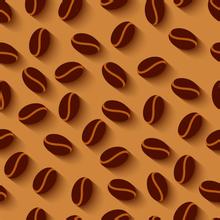Yerga Sheffield Kocher Estate Coffee Bean Grinding Scale Production Area Variety Characteristics Introduction
Yejia snow coffee uses the oldest sun treatment, but in 1972, Ethiopia introduced Central and South American water washing technology in order to improve its quality, which made its jasmine and citrus fragrance clearer and more refined, and became one of the best beans in the world. Superb washing technology has played an important role in water washing since the 1970s, however, in the past two years, Yejia snow coffee has been out of its normal state, frequently launching amazing sun-dried beans! There is a strict standard for collecting red fruits (as a result of coffee trees). Before exposure to coffee fruits, unripe green fruits or defective fruits are removed manually, and damaged or moldy fruits are removed during the sun drying process. after two weeks, the sugar and essence of the flesh and essence seep into the coffee beans, the water content is reduced to 12%, and then scrape the hardened pulp, pectin layer and pods with a planer. Take out the coffee beans and test the density and color of the beans. After eliminating the defective beans, the workers finally picked out the defective beans with the naked eye and screened them layer by layer, resulting in the cleanliness and vulgarity of Yejia snow-dried beans. "Yejia snow" refers to the strong aromas of jasmine, lemon, peaches, almonds and tea. Tasting experience has only one sentence: coffee entrance, flowers in full bloom! Just like a flower touches the comfort of taste buds and olfactory cells in the nasal cavity. In addition to the fragrance of flowers, the delicate and mellow thickness (body) is like silk massage in the mouth, and most of the wonderful coffee trees are planted in farmers' own backyard or mixed with other crops in farmland, with little yield per household, which is a typical pastoral coffee. These mountain villages are foggy, like spring all year round, with a gentle breeze in summer, cool but not hot, rain but not damp, and no cold damage in winter, giving birth to a unique citrus and floral regional flavor. Ethiopia's Yirgacheffe coffee, though petite, is gentle, delicate and sweet. As the hometown of coffee, thousands of years of planting history and processing tradition in Ethiopia have created high-quality washed Arabica beans. Light baked with unique sweet aromas of lemon, flowers and honey, soft acidity and citrus flavors, fresh and bright on the palate. No milk or sugar, let the rich texture and unique soft scent of flowers brush your taste buds, leaving an endless aftertaste Yega Xuefei is a small town, 700-21000 meters above sea level, is synonymous with Ethiopian boutique coffee. It has been a wetland since ancient times. The ancient saying "Yirga" means "settle down" and "Cheffe" means "wetland". The mode of production and flavor of coffee here is so outstanding that Ethiopian coffee farmers compete to be proud of the flavor of their coffee, making it the most famous coffee producing area in Africa.
At first, Yejassefi's coffee trees were planted by European monks, and later by farmers or cooperatives. Yega Xuefei is actually constructed by the surrounding coffee communities or cooperatives, including: Hafusha, Hama, Biloya.

Important Notice :
前街咖啡 FrontStreet Coffee has moved to new addredd:
FrontStreet Coffee Address: 315,Donghua East Road,GuangZhou
Tel:020 38364473
- Prev

Introduction of Coffee Bean Flavor description and Taste Variety in Citrus aroma Xida Mochizo producing area
Production area: Sidamo varieties: Native Arabica treatment: washing flavor: moderate sweet and sour sun berry aroma, citrus aroma, slightly fermented fruit aroma, fruit wine flavor. Palate: comfortable and interesting sour fruit, good sweetness and low thickness. Roasting degree: medium roasted Yirgacheffe coffee raw bean is one of the most distinctive coffee in the world, rare
- Next

Introduction to the taste of grinding scale treatment of coffee from Ireta Manor in Panama
There are also many excellent manors in Pokuit, except the famous Emerald Manor, Alida Manor, Aqaba Manor and so on, all of which produce high-quality boutique coffee. This is not only due to the superior ecological conditions of the Pokuit region of Panama and the fertile volcanic ash soil of the Baru volcanic land. Another important factor is that in Panama
Related
- Does Rose Summer choose Blue, Green or Red? Detailed explanation of Rose Summer Coffee plots and Classification in Panamanian Jade Manor
- What is the difference between the origin, producing area, processing plant, cooperative and manor of coffee beans?
- How fine does the espresso powder fit? how to grind the espresso?
- Sca coffee roasting degree color card coffee roasting degree 8 roasting color values what do you mean?
- The practice of lattes: how to make lattes at home
- Introduction to Indonesian Fine Coffee beans-- Java Coffee producing area of Indonesian Arabica Coffee
- How much will the flavor of light and medium roasted rose summer be expressed? What baking level is rose summer suitable for?
- Introduction to the characteristics of washing, sun-drying or wet-planing coffee commonly used in Mantenin, Indonesia
- Price characteristics of Arabica Coffee Bean Starbucks introduction to Manning Coffee Bean Taste producing area Variety Manor
- What is the authentic Yega flavor? What are the flavor characteristics of the really excellent Yejasuffi coffee beans?

